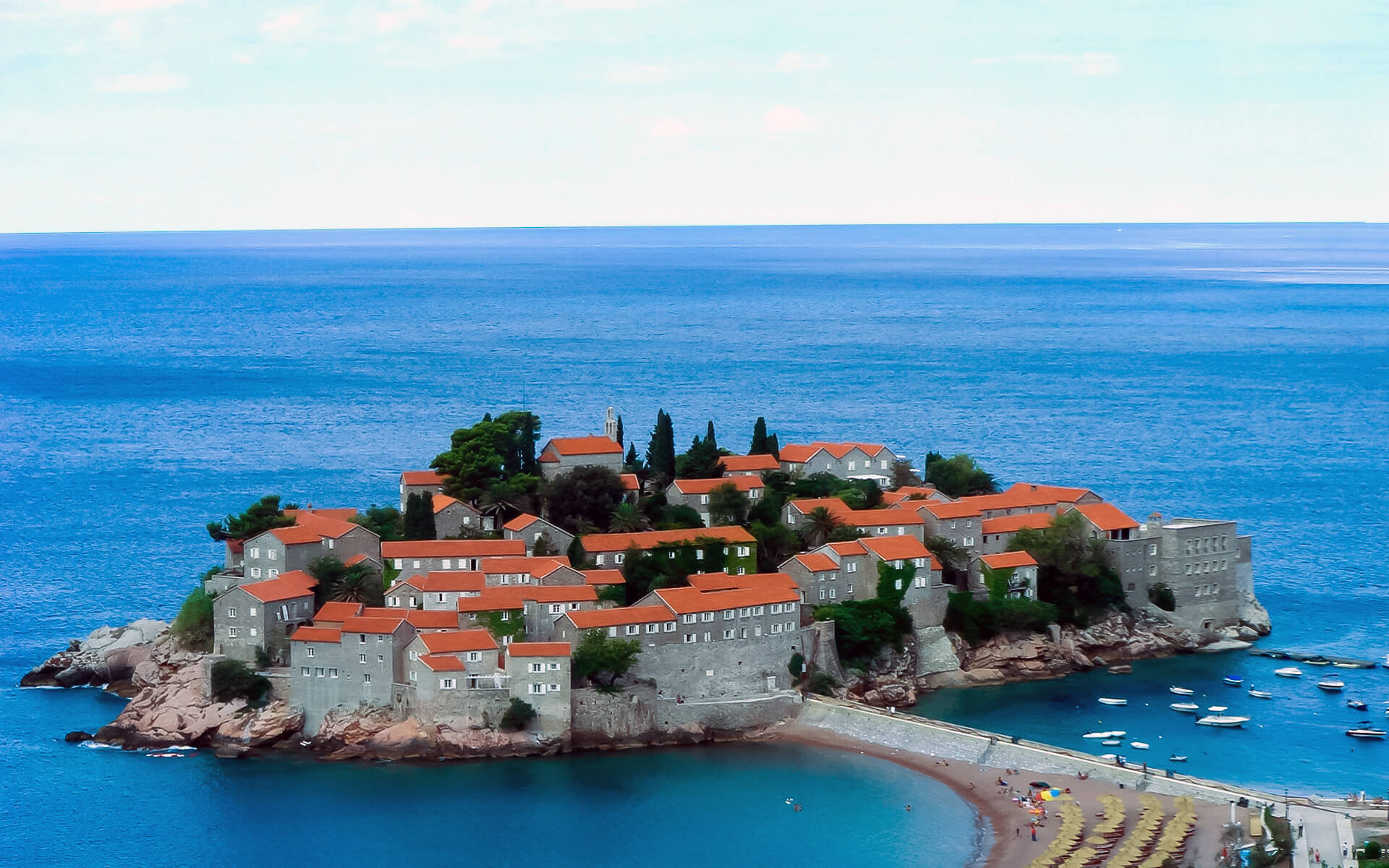Budva’s economy is mostly driven by tourism. It is a major tourist resort on the eastern Adriatic and by far the most popular in Montenegro. Budva had 668,931 tourist visits and 4,468,913 overnight stays in 2013, accounting for 44.8% of Montenegro’s tourist visits and 47.5% of its overnight stays.
Although Budva is noteworthy for its lengthy history and beautifully-preserved Old Town, it is not widely recognized as a tourist or cultural tourism destination. Budva, unlike Kotor or Dubrovnik, has the impression of a busy beach resort with a lively and energetic environment and an active nightlife.
BEACHES
The Budva Riviera has some of the most beautiful beaches in the south Adriatic, as well as the most agreeable temperature in Montenegro. Mogren beach, nestled behind the cliffs of the Spas hill, between cape Mogren and the Avala hotel, is undoubtedly the most recognized and most picturesque of the Budva city beaches. The beach is isolated from the city by the Spas hill slopes that drop to the sea, and it can only be reached via a 250m long narrow road along the cliffs. Other city beaches include the modest Ričardova glava (“Richard’s Head”) and Pizana beaches, which are located near the Old Town, as well as the 1.6 km (1.0 mi) long Slovenska plaža (Slav beach), which covers the majority of the city’s shore.
However, the bulk of Budva Riviera’s beaches are located outside of the municipal limits. Jaz Beach is a long and wide beach west of Budva, with a famous concert and festival site as well as a campground. Bečići is a vacation town located south-east of the city, separated from Budva by the Zavala peninsula.
Further south, various tiny beaches and villages make up the more upscale and private Budva Riviera. This is notably true for the famed town of Sveti Stefan, but also for several lesser Paštrovići communities in the vicinity, which were originally inconspicuous fishing villages. The region around Sveti Stefan and Pržno, including the Miločer resort with its park and quiet beaches, is regarded as the most private on the Montenegrin coast.
The settlement of Petrovac and the undeveloped Buljarica field are located in the extreme south of the municipality of Budva.
Sveti Nikola Island is situated 1 kilometer (0.6 miles) across the Budva harbor from Old Town. It is a mostly undeveloped island with some stunning beaches. It is a popular excursion location for people visiting Budva since it is well linked to the mainland by water bus.
NIGHTLIFE
Budva is locally known as the nightlife capital of the East Adriatic Sea. The first nightclub in Budva appeared in the 1980s as a dance club attached to a hotel. But by the 1990s, the club scene had grown like a mushroom. Numerous outdoor clubs are open along the coast of Budva. This trend continued until the 2000s, with numerous bars, pubs and restaurants in the old town and its promenade, with two major clubs, Top Hill and Trocadero, dominating the club scene.
OTHER
Budva is home to the Adriatic Fair (Jadranski sajam), Montenegro’s sole specialist exposition location. It hosts a number of trade fairs throughout the year, including Montenegro’s only car show, which is held each fall.
Budva is also renowned for gambling tourism, since several hotels have associated casinos. The Maestral hotel and casino in Pržno are especially popular with foreign gamblers, although other major hotels have also drawn European players. The namesake casino at the fictitious Montenegrin Hotel Splendide is featured in the 2006 James Bond film Casino Royale, raising Budva’s popularity as a gambling destination.
Budva Marina, located north of the Old Town city walls, adds to Budva’s reputation as a maritime tourist destination. During the summer, luxury boats dominate marina spaces, overshadowing tiny fishing vessels owned by locals. Budva marina used to hold boat events on a regular basis, but in recent years it has lost ground to the bigger and more affluent Porto Montenegro. In May 2008, Budva hosted the Class 1 World Powerboat Championship Grand Prix.


